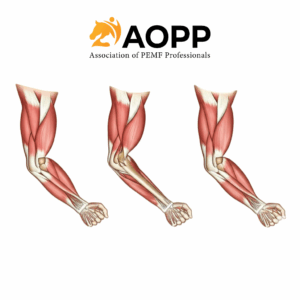Abstract
Pulsed electromagnetic field (PEMF) therapy, a noninvasive treatment, has shown promise in mitigating nerve damage. However, unaccustomed exercises, such as eccentric contractions (ECCs), can damage both muscle and nerve tissue. This study investigated whether magnetic stimulation (MS) with PEMF could aid in nerve recovery after ECCs in the elbow flexors. Twenty participants were randomly assigned to either a control (CNT) or an MS group. Following ECCs, we measured the latency of the M-wave in the musculocutaneous nerve as an indicator of nerve function. Additionally, isometric torque, range of motion, and muscle pain were assessed for muscle function. Interestingly, only the CNT group exhibited a significant increase in latency on Day 2 (p < 0.05). The MS group, on the other hand, displayed an earlier recovery trend in is

PEMF ameliorates the post-exercise increase in musculocutaneous nerve latency on Day 3 after ECCs. Also, PEMF contributes to early recovery from muscle soreness and maximum voluntary contraction reduction by ECCs. These findings might be contribute to conditioning and rehabilitation such as sports and/or orthopedic fields.
ometric torque, range of motion, and muscle soreness. Notably, muscle soreness significantly decreased immediately after MS treatment compared to pretreatment levels. These findings suggest that MS treatment can effectively attenuate nerve damage induced by ECCs exercise.
Highlights
Unaccustomed eccentric contractions (ECCs) induce maximum voluntary contraction torque deficit, muscle soreness and dominant nerve damage. Pulsed electromagnetic field (PEMF) can stimulate the peripheral nerve tissue and improve the nerve dysfunction. However, the effect of PEMF on muscle and nerve impairments after ECCs has been unknown.
